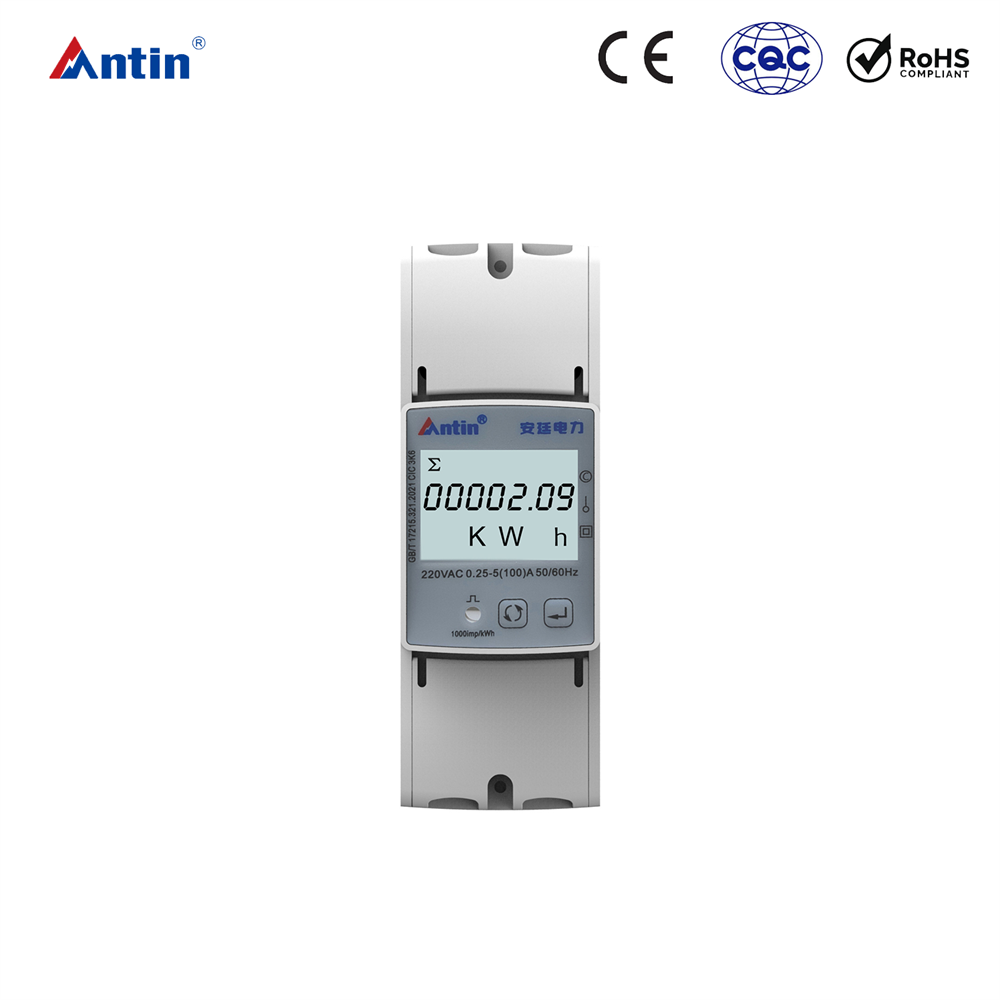Multifunction Meter vs. Traditional Meters: Which One Wins?
Understanding the Core Differences in Metering Technology
The evolution of electrical metering has transformed how we monitor and manage energy consumption across residential, commercial, and industrial applications. While traditional meters have served as reliable workhorses for decades, multifunction meters represent the cutting edge of measurement technology, offering capabilities far beyond basic consumption tracking. This comprehensive analysis explores the fundamental distinctions between these two approaches to electrical measurement, examining their respective strengths, limitations, and ideal application scenarios.
What is a Multifunction Meter and How Does It Work?
Multifunction meters represent a significant advancement in electrical measurement technology, integrating multiple measurement capabilities into a single compact device. Unlike traditional meters that typically focus on one specific parameter, these sophisticated instruments can simultaneously monitor various electrical characteristics, providing a comprehensive view of system performance.
Core Capabilities of Modern Multifunction Meters
Contemporary multifunction meters are engineered to deliver precise measurements across numerous electrical parameters, making them indispensable tools for energy management, power quality analysis, and system diagnostics. Their advanced processing capabilities enable real-time data collection and analysis that far exceeds what traditional meters can offer.
Key Measurement Parameters
- Voltage (phase-to-phase and phase-to-neutral)
- Current (all phases and neutral)
- Active, reactive, and apparent power
- Power factor and phase angle
- Frequency and harmonic distortion
- Energy consumption (import and export)
- Demand monitoring and forecasting
Advanced Features Beyond Basic Measurement
Modern multifunction meters incorporate sophisticated features that transform raw measurement data into actionable intelligence. These include advanced communication protocols, data logging capabilities, and customizable alarm functions that alert operators to abnormal conditions before they escalate into serious problems. The integration of these features makes multifunction meters particularly valuable for applications requiring multifunction meter for energy management systems, where comprehensive data collection and analysis are essential for optimizing performance and reducing operational costs.
The Legacy of Traditional Meters: Strengths and Limitations
Traditional meters, including electromechanical induction meters and basic electronic meters, have formed the backbone of electrical measurement for generations. These devices are characterized by their focused functionality, typically measuring a single parameter such as energy consumption or current flow without the additional features found in their multifunction counterparts.
Types of Traditional Meters and Their Applications
Traditional meters come in various forms, each designed for specific measurement tasks and applications. Understanding these different types helps clarify where traditional meters continue to offer value and where their limitations become apparent compared to multifunction alternatives.
Common Traditional Meter Varieties
- Electromechanical induction meters for basic energy billing
- Analog panel meters for visual monitoring
- Single-function digital meters for specific parameter measurement
- Current transformers with basic indicator displays
- Voltage testers and simple multimeters
Inherent Limitations in Traditional Meter Design
While traditional meters excel at their designated tasks, they suffer from significant limitations in modern electrical environments. Their inability to provide comprehensive system analysis, lack of communication capabilities, and single-parameter focus make them inadequate for complex monitoring requirements. This is particularly evident when considering applications that require three phase power quality analyzer capabilities, where traditional meters simply cannot provide the detailed harmonic analysis and power quality assessment needed to maintain system reliability.
Comprehensive Feature Comparison: Multifunction vs. Traditional Meters
When evaluating multifunction meters against traditional alternatives, the differences extend far beyond basic measurement capabilities. The comparison reveals fundamental distinctions in functionality, accuracy, and long-term value that significantly impact their suitability for various applications.
Measurement Capabilities and Accuracy
Multifunction meters consistently outperform traditional meters in both the breadth of parameters measured and the precision of those measurements. While traditional meters might specialize in one area, multifunction devices provide comprehensive monitoring with accuracy that meets or exceeds international standards across all measured parameters.
| Measurement Parameter | Traditional Meter Capability | Multifunction Meter Capability |
|---|---|---|
| Basic Energy Consumption | Typically excellent for designated function | High accuracy with additional tariff support |
| Power Quality Analysis | Limited or nonexistent | Comprehensive including harmonics, transients |
| Multiple Parameter Monitoring | Single parameter focus | Simultaneous measurement of all parameters |
| Data Logging and Storage | Minimal or none | Extensive with historical trend analysis |
| Communication Capabilities | Rare and basic when available | Advanced with multiple protocol support |
Installation and Integration Considerations
The installation process and integration requirements differ significantly between traditional and multifunction meters. While traditional meters often boast simpler installation procedures, multifunction meters provide greater long-term flexibility and integration potential that justifies their more complex initial setup. This advantage becomes particularly valuable for facilities implementing smart grid monitoring solutions, where seamless integration with existing infrastructure is essential for maximizing system-wide benefits.
Key Advantages of Multifunction Meters in Modern Applications
Multifunction meters deliver substantial benefits across various applications, from industrial facilities to commercial buildings and utility installations. Their advanced capabilities translate into tangible operational advantages that extend far beyond basic measurement functionality.
Comprehensive Energy Management Capabilities
The ability to monitor multiple energy parameters simultaneously enables sophisticated energy management strategies that are impossible with traditional meters. Multifunction meters provide the data granularity needed to identify inefficiencies, optimize consumption patterns, and verify the effectiveness of energy conservation measures.
Energy Optimization Features
- Real-time monitoring of consumption across multiple circuits
- Identification of energy usage patterns and anomalies
- Demand forecasting and load profiling
- Verification of energy savings from efficiency projects
- Comprehensive reporting for regulatory compliance
Advanced Power Quality Monitoring
Power quality issues represent a significant challenge in modern electrical systems, causing equipment malfunctions, premature failures, and operational disruptions. Multifunction meters excel at identifying and analyzing these issues, providing crucial diagnostic information that helps maintain system reliability. This capability makes them particularly suitable as a power quality analyzer for industrial facilities, where even minor power quality issues can result in substantial production losses and equipment damage.
Cost-Benefit Analysis: Initial Investment vs. Long-Term Value
While multifunction meters typically command a higher initial purchase price than traditional meters, their long-term value proposition often justifies this investment through operational savings, improved efficiency, and prevented downtime.
Total Cost of Ownership Considerations
Evaluating the true cost of metering solutions requires looking beyond initial purchase prices to consider installation, maintenance, and operational impacts. When these factors are accounted for, multifunction meters frequently demonstrate superior economic value over their service life.
| Cost Factor | Traditional Meters | Multifunction Meters |
|---|---|---|
| Initial Equipment Cost | Generally lower | Higher initial investment |
| Installation Expenses | Typically simple and inexpensive | More complex, potentially higher cost |
| Maintenance Requirements | Minimal but manual reading may be needed | Low with automated monitoring |
| Operational Efficiency Impact | Limited data for optimization | Substantial savings through detailed analytics |
| Downtime Prevention | Reactive approach to problems | Proactive issue identification |
Return on Investment Calculation
The return on investment for multifunction meters derives from multiple sources, including energy savings, maintenance reduction, and operational improvements. Organizations typically recover their investment within predictable timeframes, after which the meters continue generating value throughout their operational life. This financial advantage is particularly evident when implementing energy monitoring in commercial buildings, where the detailed consumption data enables targeted efficiency measures that deliver rapid payback periods.
Implementation Considerations for Different Scenarios
The optimal choice between multifunction and traditional meters depends significantly on the specific application requirements, existing infrastructure, and organizational objectives. Understanding these contextual factors ensures selecting the most appropriate solution for each unique situation.
Residential and Light Commercial Applications
For smaller-scale applications, the decision between meter types involves balancing functionality requirements against budget constraints. While basic traditional meters may suffice for simple billing purposes, multifunction meters offer advantages that extend beyond basic consumption tracking.
Residential Implementation Factors
- Basic energy billing vs. detailed consumption analysis
- Integration with home energy management systems
- Future-proofing for smart home applications
- Cost sensitivity and budget limitations
- Regulatory requirements and utility programs
Industrial and Heavy Commercial Applications
Industrial environments present the strongest case for multifunction meter implementation, with complex electrical systems that benefit from comprehensive monitoring and analysis capabilities. In these settings, the advanced features of multifunction meters deliver substantial operational and financial benefits.
Industrial Implementation Considerations
- Critical nature of power quality for sensitive equipment
- Need for predictive maintenance capabilities
- Regulatory compliance and reporting requirements
- Integration with building management systems
- Submetering requirements for cost allocation
Future Trends in Electrical Measurement Technology
The evolution of electrical metering continues to advance, with emerging technologies enhancing the capabilities of both traditional and multifunction meters while blurring the distinctions between them.
Technological Advancements Shaping Future Meters
Several technological trends are influencing the development of next-generation metering solutions, with implications for both functionality and application possibilities. These advancements promise to further enhance the value proposition of comprehensive monitoring solutions.
Emerging Technologies in Electrical Measurement
- Integration with Internet of Things (IoT) platforms
- Advanced sensors and measurement techniques
- Artificial intelligence for predictive analytics
- Enhanced communication capabilities
- Cybersecurity improvements for connected devices
The Convergence of Metering and Energy Management
The distinction between measurement devices and management systems continues to diminish as multifunction meters evolve into comprehensive energy management platforms. This convergence creates new opportunities for optimization and control that extend far beyond traditional metering functions. The development of sophisticated electrical power monitoring devices represents this trend, combining measurement capabilities with analytical functions that support informed decision-making and automated system responses.
Making the Right Choice for Your Specific Needs
Selecting between multifunction and traditional meters requires careful consideration of current requirements, future needs, and the specific context in which the meters will operate. While multifunction meters offer superior capabilities for most modern applications, traditional meters retain relevance in specific scenarios where their simplicity and focused functionality provide adequate solutions.
Decision Framework for Meter Selection
A structured approach to meter selection ensures that all relevant factors receive appropriate consideration, leading to optimal decisions that balance immediate needs with long-term objectives.
Key Selection Criteria
- Current and anticipated measurement requirements
- Integration with existing systems and infrastructure
- Available budget and return on investment expectations
- Technical expertise available for installation and operation
- Regulatory compliance and reporting obligations
- Future expansion plans and scalability requirements
Transition Strategies from Traditional to Multifunction Meters
Organizations considering the transition from traditional to multifunction meters can implement various strategies to manage the change effectively while maximizing benefits and minimizing disruption. A phased approach often proves most effective, prioritizing critical areas where advanced monitoring delivers immediate value before expanding to broader implementation.
The comprehensive capabilities of multifunction meters position them as the clear winner for most contemporary applications, particularly where detailed electrical system analysis, energy management, or power quality monitoring are priorities. While traditional meters continue to serve adequately in basic applications, the advancing capabilities and decreasing costs of multifunction solutions make them increasingly accessible and valuable across all sectors. As electrical systems grow more complex and the emphasis on efficiency intensifies, the comprehensive data provided by multifunction meters becomes not just advantageous but essential for informed operational and financial decision-making.






